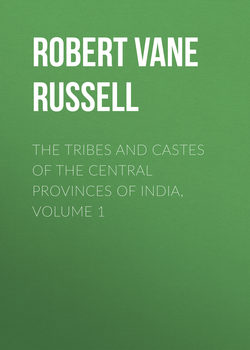Читать книгу The Tribes and Castes of the Central Provinces of India, Volume 1 - Robert Vane Russell - Страница 7
Part I.
Introductory Essay on Caste
Introductory Essay on Caste
4. The meaning of the term ‘Caste.’
ОглавлениеThe two main ideas denoted by a caste are a community or persons following a common occupation, and a community whose members marry only among themselves. A third distinctive feature is that the members of a caste do not as a rule eat with outsiders with the exception of other Hindu castes of a much higher social position than their own. None of these will, however, serve as a definition of a caste. In a number of castes the majority of members have abandoned their traditional occupation and taken to others. Less than a fifth of the Brāhmans of the Central Provinces are performing any priestly or religious functions, and the remaining four-fifths are landholders or engaged in Government service as magistrates, clerks of public offices, constables and orderlies, or in railway service in different grades, or in the professions as barristers and pleaders, doctors, engineers and so on. The Rājpūts and Marāthas were originally soldiers, but only an infinitely small proportion belong to the Indian Army, and the remainder are ruling chiefs, landholders, cultivators, labourers or in the various grades of Government service and the police. Of the Telis or oil-pressers only 9 per cent are engaged in their traditional occupation, and the remainder are landholders, cultivators and shopkeepers. Of the Ahīrs or graziers only 20 per cent tend and breed cattle. Only 12 per cent of the Chamārs are supported by the tanning industry, and so on. The Bahnas or cotton-cleaners have entirely lost their occupation, as cotton is now cleaned in factories; they are cartmen or cultivators, but retain their caste name and organisation. Since the introduction of machine-made cloth has reduced the profits of hand-loom weaving, large numbers of the weaving castes have been reduced to manual labour as a means of subsistence. The abandonment of the traditional occupation has become a most marked feature of Hindu society as a result of the equal opportunity and freedom in the choice of occupations afforded by the British Government, coupled with the rapid progress of industry and the spread of education. So far it has had no very markedly disintegrating effect on the caste system, and the status of a caste is still mainly fixed by its traditional occupation; but signs are not wanting of a coming change. Again, several castes have the same traditional occupation; about forty of the castes of the Central Provinces are classified as agriculturists, eleven as weavers, seven as fishermen, and so on. Distinctions of occupation therefore are not a sufficient basis for a classification of castes. Nor can a caste be simply defined as a body of persons who marry only among themselves, or, as it is termed, an endogamous group; for almost every important caste is divided into a number of subcastes which do not marry and frequently do not eat with each other. But it is a distinctive and peculiar feature of caste as a social institution that it splits up the people into a multitude of these divisions and bars their intermarriage; and the real unit of the system and the basis of the fabric of Indian society is this endogamous group or subcaste.
